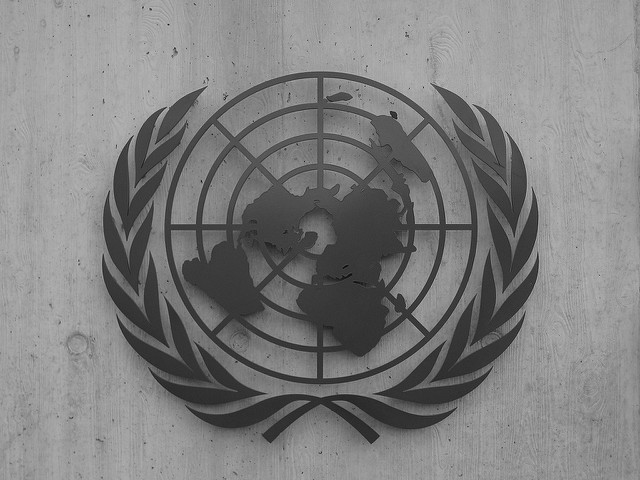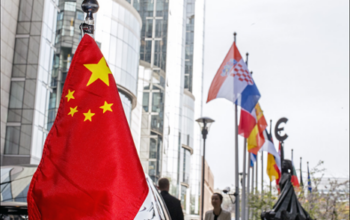The grey zones between UN Charter goals
1945. The United Nations is full of hope.
We fast-forward through time. Countries invaded. Human rights violated. Territories occupied. Peaceful demonstrations knocked down. People in despair. Where is the UN, the marvelous international society with all of its principles, the world wonders?
That is where the problem begins—all of its principles. The UN has quite a few of them. But the UN’s principles are not a problem, you respond. Because who would argue against human rights? I reckon that no sane human would. Who would dispute the right to self-defense? Perhaps only imperialist warmongers. Then what exactly is this problem?
Grey zones. The place where no one is sure what is allowed, and more importantly, not allowed. International law by itself is already a grey zone. Is it truly law? Or merely standards, norms, and principles? In the UN, these grey zones come in the shape of the goals and values written in the UN Charter, which lays out the core of the whole organisation. Many of the articles in the Charter conflict with one another, causing situations where you cannot honour both at the same time. Which article overrules the other, which is more important? Let us answer that question with an example. When your mom used to say you can only have one cookie a day, but also that you should not waste food and the pack of cookies expires tomorrow. Then what? Easy. You have another cookie, or five, making sure they are not wasted. You pick the value which is in your best interest.
However, the best interest of one is often not the best interest of another. Where you enjoyed the benefit of a lot of cookies, your mom faces the disadvantage you not hungry while she made dinner. There is however an advantage to having no clear boundaries: more freedom to act. When the UN is stuck in a bureaucratic nightmare of inaction, the grey zones in the Charter can be used to undertake action. Or they can also be abused. What is permitted, tolerated, frowned upon, protested against, forbidden? There is no black and white.
Self-defense vs non-intervention
The United Nations consists of, no surprise, nations. An important principle to states is sovereignty, having been added to the Charter in several ways, including the right to self-defense (article 51) and the right to non-intervention (article 2.4). When your state is attacked by another, you can defend yourself against it, even when this means breaking the UN’s non-aggression rule. Similarly, another state does not have the right to intervene in your state’s affairs to begin with.
Sounds clear cut? Unfortunately not. Remember when the United States and its allies invaded Iraq? They did so by claiming Iraq had weapons of mass destruction, which could be a threat to their national security. So they felt the need for self-defense, and invaded. Preemptive self-defense, but nonetheless, self-defense—going directly against Iraq’s right to non-intervention.
Self-defense vs individual human rights
Even in war, human rights need to be safeguarded. While Security Council resolutions often mention the need for human rights, and the Secretary General and the General Assembly argue for them in a persistent manner, reality is that legal reasonings are being put forward to justify human rights violations.
In his book ‘The UN and Changing World Politics’, Thomas G. Weiss argues that in the case of severe safety threats and war, as part of self-defense, human rights can justifiably be violated. When a plane, containing 110 people, was supposedly hijacked and considered a threat to thousands attending the Sochi Winter Olympics Games in 2014, permission was given to have it shot down. In the War on Terror, prisoners were tortured as part of the interrogations.
Many would disagree with the claim that war is a valid reason to violate human rights, but also in this case a defense to continue harming them is shaped. Even if not in self-defense, they would argue it is illegal for others to intervene in the sovereignty of the state, even a state using torture. Yet the protection of human rights is evermore seen as a prerequisite for a state to earn their sovereignty, and the Responsibility to Protect hangs over their head.
However, law has grey zones. By using these grey zones, attempts are made not to make torture legal, but at least to make it not illegal.
The ever-lasting self-determination dispute
The 2005 UN World Summit agreed to “condemn terrorism in all forms”. Yet, this does not resolve the question of what constitutes terrorism. The reason why this was left undefined is quickly found. The UN Charter mentions “the principle of […] self-determination of peoples” (article 1.2).
Some consider that there are justifiable motives for the use of terrorism, such as in the process of liberation from foreign occupation. Examples include the independence of many states, from the Eastern Bloc to the decolonised Africa. The liberated people might see the terrorising moves as heroic but the story must be different for those that witnessed violent self-determination movements within their territory. To them, recognising that they themselves are to blame for terrorist activities being undertaken against them, is completely unacceptable.
Self-determination can also go against UN Charter right to territorial integrity (article 2.4). One can argue the Catalans have the right to self-determination, but at the same time that Spain has the right to territorial integrity. Both have a valid point in their reasoning.
Fighting for values, one shade of grey at a time
The United Nations was made by states to improve the world, without them agreeing on what is an improvement. So the grey zones were made, to make sure the UN could at the least protect some of its core values. Now the grey zones are kept, so the states can pick and choose their values. The UN is caught in a grey web of bright global goals and dark national realities. So we are left wondering, between hope and fear: just as the UN was founded after the scourge of war, do we have to again go through the dark night before we can greet the sunrise.
- The UN is full of doubt.
By Diego Annys
Image by Harshil Shah, Geneva – United Nations logo, Attribution-NoDerivs 2.0 Generic (CC BY-ND 2.0)






